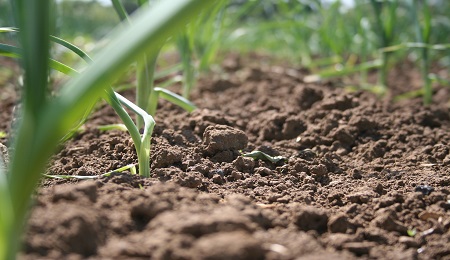Review on nutrient management, cycles, flows and balances in different farming systems
Keywords:
Nutrient cycle, Nutrient balance, Farming systemAbstract
Soil fertility management is continuously modified and adapted as conditions change in time and integrated plant nutrient management is a holistic approach to optimizing plant nutrient supply for the objective of adequately nourish the crop as efficiently as possible, while minimizing potentially adverse impacts to the environment Existence of life depends on continuous cycling of nutrients from the nutrient pool (in the abiotic component of environment) to the living beings and then back to the nutrient pool. These complex series of invisible, delicately balanced, and interrelated biochemical reactions fuel life on earth. Nutrients cycles have been substantially altered by human activities mainly agriculture with large positive and negative consequences for a range of ecosystem services and for human well-being and The presence of animals into the agricultural production system can modify the rates and flows of nutrient dynamics between the compartments of the system and Integrated crop-livestock systems can positively change the biophysical and socio-economic dynamics of farming systems, reestablishing sustainable rural development and promoting higher overall farm profitability. Soil nutrient balances reflect the net change in soil fertility and indicate trends in time, but do not necessarily determine the current state of soil fertility yet; soil nutrient balances can differ considerably between different crops, farming systems and agro-ecological zones.
References
Agegnehu, G., Amede, T., 2017. Integrated soil fertility and plant nutrient management in tropical agro-ecosystems: A review. Pedosphere, 27(4), 662-680.
Aguinaga, A.A.Q., Carvalho, P.C.F., Anguinoni, I., Pilau, A., Aguinaga, A.J.Q., Gianluppi, G.D.F., 2008. Morphological components and forage production of oat (Avena strigosa, Schreb) and annual ryegrass (Lolium multiflorum, Lam) pasture managed at different heights. R Bras. Zootec., 37(9), 1523-1530.
Alori, E.T., Babalola, O.O., 2018. Microbial inoculants for improving crop quality and human health in Africa. Front. Microbiol., 9, 2213p.
Balbinot, J., Moraes, A.D., Veiga, M.D., Pelissari, A., Dieckow, J., 2009. Crop-livestock system: Intensified use of agricultural lands. Ciência Rural, 39(6), 1925-1933.
Barea, J.M., Azcon-Aguilar, C., Azcon, R., 1997. Interactions between mycorrhizal fungi and rhizosphere microorganisms within the context of sustainable soil-plant systems. Multitroph. Interact. Terrest. Syst., 65-77.
Batista, I., Correia, M.E.F., Pereira, M.G., Bieluczyk, W., Schiavo, J.A., Rouws, J.R.C., 2014. Oxidizable fractions of total organic carbon and soil macrofauna in a crop-livestock integration system. Revista Brasileira de Ciência do Solo, 38(3), 797-809.
Beusen, A.H.W., Bouwman, A.F., Heuberger, P.S.C., Van Drecht, G., Van Der Hoek, K.W., 2008. Bottom-up uncertainty estimates of global ammonia emissions from global agricultural production systems. Atmosph. Environ., 42(24), 6067-6077.
Bhogal, A., Nicholson, F.A., Young, I., Sturrock, C., Whitmore, A.P., Chambers, B.J., 2011. Effects of recent and accumulated livestock manure carbon additions on soil fertility and quality. European journal of soil science, 62(1), 174-181.
Billen, G., Garnier, J., Lassaletta, L., 2013. The nitrogen cascade from agricultural soils to the sea: modelling nitrogen transfers at regional watershed and global scales. Philosophical Transactions of the Royal Society B: Biological Sciences, 368(1621), 20130123.
Boesen, J., Friis-Hansen, E., 2001. Soil fertility management in semi-arid agriculture in Tanzania: Farmers' perceptions and management practices. Centre for Development Research, Vol 1.
Bot, A., Benites, J., 2005. The importance of soil organic matter: Key to drought-resistant soil and sustained food production. Food Agr. Org., No 80.
Brady, N., Weil, R.R., 2002. The nature and properties of soils. 13 Edic, Prentince Hall, New Jersey, USA, 598p.
Brouwer, J., Powell, J.M., 1998. Increasing nutrient use efficiency in West-African agriculture: The impact of micro-topography on nutrient leaching from cattle and sheep manure. Agr. Ecosyst. Environ., 71(1-3), 229-239.
Castellano, S.D., Dick, R.P., 1990. Cropping and sulfur fertilization influence on sulfur transformations in soil. Soil Sci. Soc. Am. J., 54, 114-121.
Christensen, B.T., 2004. Tightening the nitrogen cycle. In: Schjønning, P., Elmholt, S., Christensen, B.T. (eds.): Managing soil quality. Challenges in Modern Agriculture, CAB International, Wallingford, UK, 47-67.
Cobo, J.G., Dercon, G., Cadisch, G., 2010. Nutrient balances in African land use systems across different spatial scales: A review of approaches, challenges and progress. Agr. Ecosyst. Environ., 136, 1-15.
Cordell, D., Drangert, J-O., White, S., 2009. The story of phosphorus: Global food security and food for thought. Glob. Environ. Chang., 19(2), 292-305.
Crews, T.E., Peoples, M.B., 2005. Can the synchrony of nitrogen supply and crop demand be improved in legume and fertilizer-based agroecosystems? A review. Nutr. Cycl. Agroecosyst., 72, 101-129.
Dalsgaard, J.P.T., Oficial, R.T., 1997. A quantitative approach for assessing the productive performance and ecological contributions of smallholder farms. Agr. Syst., 55, 503-533.
de Jager, A., Onduru, D.D., van Wijk, M.S., Vlaming, J., Gachini, G.N., 2001. Assessing sustainability of low-external-input farm management systems with the nutrient monitoring approach: A case study in Kenya. Agr. Syst., 69, 99-118.

Published
How to Cite
Issue
Section
Copyright (c) 2020 Scientific Journal of Review

This work is licensed under a Creative Commons Attribution-NonCommercial-NoDerivatives 4.0 International License.



